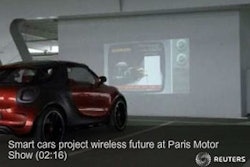This article first appeared in IMPO's October 2012 issue.
Lighting: one of the basic components of the modern industrial landscape, and a component so basic that manufacturers often ignore it. But with the emergence of LEDs, solar, and new technologies – such as remote phosphor technology – this landscape is changing, says Terry Bair, vice president, industrial vertical, Acuity brands: “The emergence of LEDs has greatly impacted the industrial landscape.” LEDs’ lighting quality, lumen output, control options, and reduced energy consumption have given manufacturers strong competitors for the role fluorescent and metal halide systems have traditionally filled. Due to recent legislation to decrease energy use, manufacturers are today turning to lighting that can impact their bottom line, while at the same time reducing maintenance and their global footprint.
New Lighting Solutions
“The continual rapid advancement of LED lumen packages coupled with lower costs places this technology in a prime position for rapid growth,” says Bair. For manufacturers looking to LEDs because of their long life, lighting controls can make LEDS an even more attractive option with their ability to expand the LED lifespan even further. “The selective use of daylighting and controls linked to electric lighting has impacted, and will continue to significantly impact, the industrial space,” Bair adds. Lighting systems have advanced to include wireless control options, and today there are multi-layer options available that range from building or campus-wide distributed control methods, to fixture-level controls. These technology advancements enable dimming and switching options “to fit any application,” says Bair. Occupancy sensors help mitigate human errors, like leaving lights on when leaving for the day, while self-calibrating daylighting controls are able to monitor daylight to control light output, maintaining a set level of footcandles on any given surface.
A control system also gives manufacturers control over their peak demand, which can be critical in achieving maximum lighting system energy savings. “A control based system that monitors energy output can perform load shedding to impact your peak power usage,” explains Clay Warren, director of business, Horner ETG, a division of Horner APG. “Load shedding is when your peak power usage starts to trend upward and your system efficiently makes changes to reduce peak power output.”
A newer approach for creating sustainable savings in lighting applications is remote phosphor technology, a solution where “the phosphor composite is separated from the blue LED energy source,” says Warren. He explains further: “The independent phosphor emits light when excited by the blue light. When phosphor is separated from the energy source the benefits include increased efficacy, reduced glare, sustainability, and uniformity of light.” Compared to a traditional LED, remote phosphor technology results in more lumens per watt (efficacy), reducing the total cost of ownership. Key to the longevity of remote phosphor lighting solutions is the lower operating temperature, says Warren, because it contributes to increased efficacy. “For example, the traditional approach is putting the phosphor directly on the LED where heat can’t escape. With our remote phosphor solution, the phosphor doesn’t degrade as rapidly because it’s separated from the LED.” The temperature in both the phosphor and the LED is reduced by separating the phosphor from the LED, resulting in a more sustainable product. And when the phosphor does degrade, the entire light engine doesn’t need to be replaced, just the phosphor – a “lost cost alternative,” says Warren. And remote phosphor products are impact tested, leading to a product that can “withstand a high level of impact without resulting in a reduction of light output.”
Adding to the variety of available lighting options is solar. Bair says, “Solar is a natural component in a three-pronged approach to industrial building lighting in complementing electric lighting and control.” Combining solar power with lighting controls and the practice of load shedding can produce “real savings,” Warren says, “because solar output generally matches your peak power well.” Based on the cost per kilowatt-hour, solar alone often doesn’t present a high return on an investment, but improvements in lithium ion phosphate technology are bringing cost-effective solar power closer to reality.
Choose Wisely
To help manufacturers select the best and most efficient lighting solutions for their organizations, today there are economic analysis calculators and lighting layout programs that look at the true economic value of a lighting system. “I think, given the emergence of LED sources integrating controls, and the fact that manufactures can rather simply select a controls strategy per space spanning their entire campus property,” says Bair, there will be “an even greater emphasis on tool usage.” Free, web-based, user-friendly design tools – like the Visual Economic Tool – that use recommended industry practices to simultaneously estimate and compare the life-cycle costs of lighting systems are now available, allowing manufacturers to make wise decisions when it comes to their facility’s lighting needs.
With regards to the variety of industrial lighting solutions available today, Bair says, “Collectively, these technology advancements have, and will continue to, favorably shape codes, guidelines, and certainly customer habits.”























